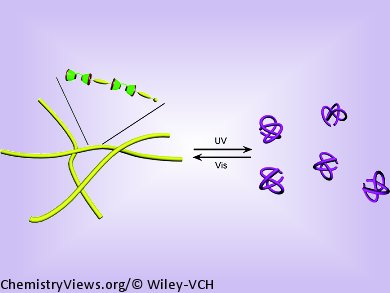Chemists and materials scientists are increasingly making use of noncovalent interactions, such as hydrogen bonding and π-stacking, to produce materials with useful properties. As Yu Liu and co-workers have shown, host–guest interactions can now be added to this list.
The team from Nankai University, China, made photoresponsive polymers from a modified calix[4]arene host and a guest consisting of an extended azobenzene derivative. Molecular recognition of the charged pyridine group of the guest by the cavity of the host causes the formation of extended linear structures, which can then be reversibly converted to globular nanoparticles through photoisomerization of the azobenzene unit with different wavelengths of light.
The group hopes that these examples of responsive materials based on host–guest interactions will form the basis of more sophisticated systems in the future.
- p-Sulfonatocalix[4]arene Supramolecular Polymers: Formation by Host–Guest Interactions and Light Response,
Hai Qian, Dong-Sheng Guo, Yu Liu,
Asian J. Org. Chem. 2012.
DOI: 10.1002/ajoc.201200050




